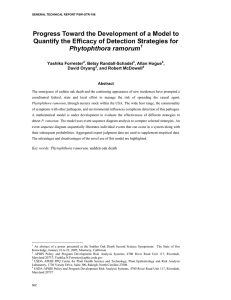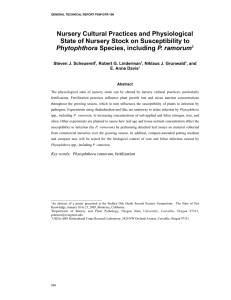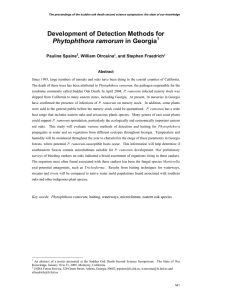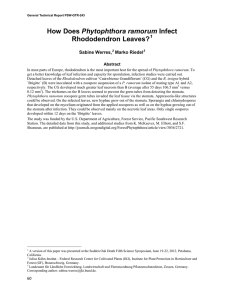Single-Strand Conformation Polymorphism Analysis of Ribosomal DNA for Detection of Plant Tissues
advertisement
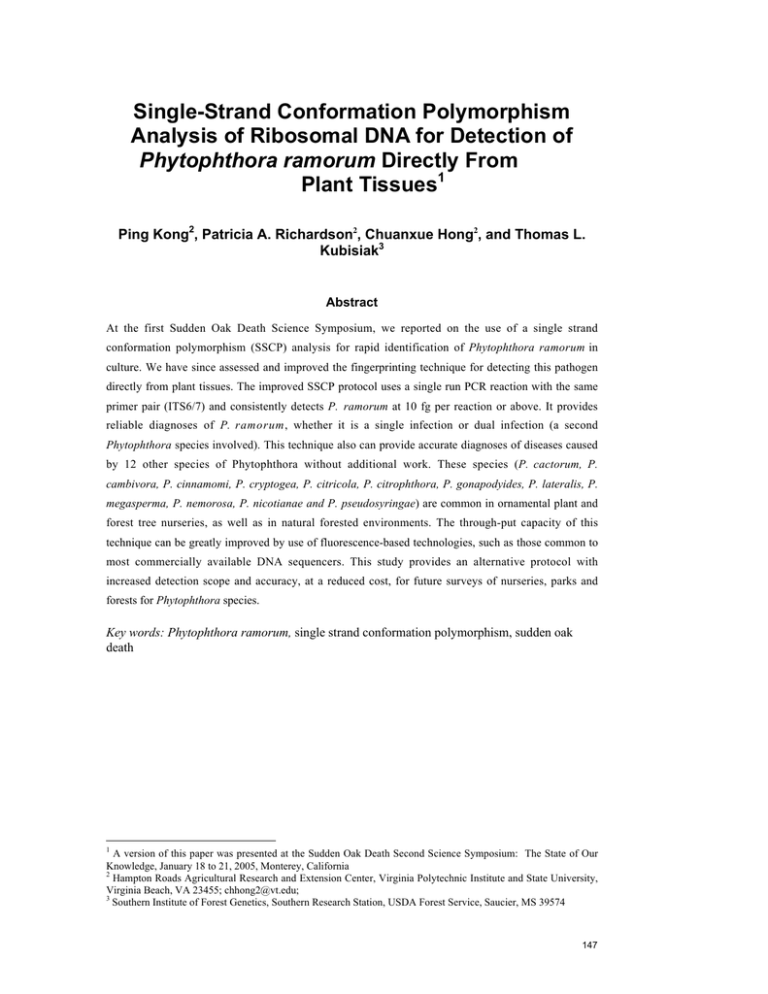
Single-Strand Conformation Polymorphism Analysis of Ribosomal DNA for Detection of Phytophthora ramorum Directly From Plant Tissues1 Ping Kong2, Patricia A. Richardson2, Chuanxue Hong2, and Thomas L. Kubisiak3 Abstract At the first Sudden Oak Death Science Symposium, we reported on the use of a single strand conformation polymorphism (SSCP) analysis for rapid identification of Phytophthora ramorum in culture. We have since assessed and improved the fingerprinting technique for detecting this pathogen directly from plant tissues. The improved SSCP protocol uses a single run PCR reaction with the same primer pair (ITS6/7) and consistently detects P. ramorum at 10 fg per reaction or above. It provides reliable diagnoses of P. ramorum, whether it is a single infection or dual infection (a second Phytophthora species involved). This technique also can provide accurate diagnoses of diseases caused by 12 other species of Phytophthora without additional work. These species (P. cactorum, P. cambivora, P. cinnamomi, P. cryptogea, P. citricola, P. citrophthora, P. gonapodyides, P. lateralis, P. megasperma, P. nemorosa, P. nicotianae and P. pseudosyringae) are common in ornamental plant and forest tree nurseries, as well as in natural forested environments. The through-put capacity of this technique can be greatly improved by use of fluorescence-based technologies, such as those common to most commercially available DNA sequencers. This study provides an alternative protocol with increased detection scope and accuracy, at a reduced cost, for future surveys of nurseries, parks and forests for Phytophthora species. Key words: Phytophthora ramorum, single strand conformation polymorphism, sudden oak death 1 A version of this paper was presented at the Sudden Oak Death Second Science Symposium: The State of Our Knowledge, January 18 to 21, 2005, Monterey, California 2 Hampton Roads Agricultural Research and Extension Center, Virginia Polytechnic Institute and State University, Virginia Beach, VA 23455; chhong2@vt.edu; 3 Southern Institute of Forest Genetics, Southern Research Station, USDA Forest Service, Saucier, MS 39574 147



